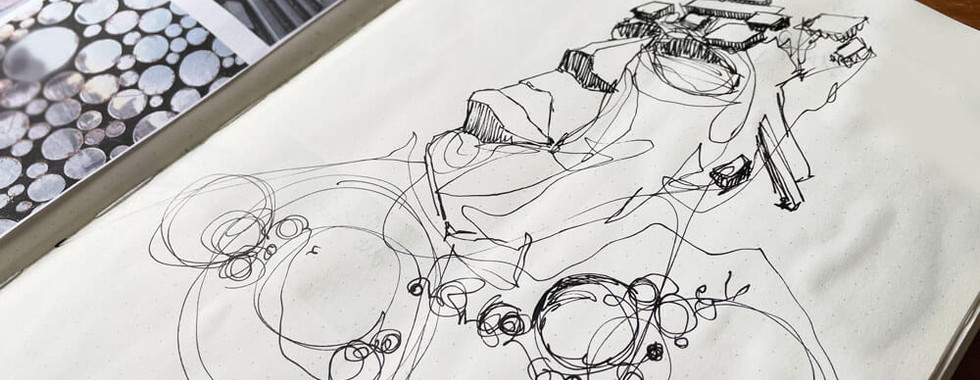Art Journals – a tool, not a piece of art!
- Jeanette Bohn

- May 3, 2024
- 3 min read
I learn best when I write something down – very old school, with pen and paper. And even more so when I highlight things in colour or illustrate them. For my artistic progress, I therefore keep an artistic diary. It's not a sketchbook in that sense, because its goal is not to be filled with beautiful pictures. Rather, I create a compendium of all that I learn and the ideas that arise from it. This is how I use art journals:

Capturing Input
I note down valuable information from books, transcripts from courses, tips from the vastness of the internet. But I also paste in photos from exhibitions I have visited – with notes on what I liked and why, what I take away from it and what helps me progress.
For example, at a Rembrandt exhibition in Frankfurt, his paintings were hung next to those of other artists of his time. It was so obvious to me why his stood out, how much better he handled lighting and thus guided the viewer's gaze. I could keep such things in the back of my mind, but once photographed and written down, it's more likely that I can recall it when I'm stuck on a portrait and unsure why it's not working (yet).
Sometimes photos of everyday findings also end up in there – things that inspire me and whose motif, texture or detail I would like to integrate into my pictures. Torn poster walls, spray-painted windows in the train photographed from the inside, an impressive colour gradient.
Last but not least, I also write down my research for projects in it, as my series of pictures often rely on a lot of input and knowledge that I need to record somewhere.
Generating Output
The journals also contain my own ideas, thumbnails, small sketches, colour and material tests and all kinds of visual experiments. Thrown-together picture ideas are just as included as spontaneous sketches of something experienced, doodles or even a detailed hatched drawing. This way I expand my visual vocabulary and further develop my style. My artistic ideas rarely arise from an abstract thought, rather they are results of all these observations and attempts.
Documenting
Perhaps the greatest benefit I derive, however, is from documenting my own progress. To see what I once noted down, what now seems self-evident to me. To see what once inspired me and how my pictures and ideas have evolved.
You forget so much. How I would love to still have all the drawings and ideas from my childhood and youth! Unfortunately, not much of it is left. I also wish I had started with the art journals earlier. I've only been doing it regularly since 2021 and there's already so much development to see in it. Tracing changes and reflecting on the many small steps you've taken on a journey can be very enriching.
Practical Tips
I believe there is not one 'right' way to keep an art journal. It is a tool and should be designed and used in the way that works best. Probably this is very individual. I have defined the following helpful framework conditions for myself:
Analog: For me to actually use it, it has to be analog books. I want to feel the paper, write, draw, record something physically, so that I can flip through it and read it afterwards. It should stand on the shelf and remind me that I can always refer back to it when I stand in front of a blank canvas. No digital project folder or board that I have ever used has worked that well for me.
Deliberately ugly: In the journal, there should be no fear of scribbling something that is half-baked. Any pen and any material can be used, things are cut and glued (in the absence of glue sometimes with colourful tape), it is crossed out and commented. It is a tool and should be used as such.
Always with you: It would be of no use if I didn't have it with me. I have now found a size that suits me. My books are slightly larger than A5 and relatively flat, so that the hand can still lie comfortably when writing and drawing. They are relatively lightweight and the current one is almost always with me – and if I want to travel with very light luggage, I pack loose paper and glue it in afterwards.
For me, art journaling is now as much a part of my artistic practice as painting itself.























Comments